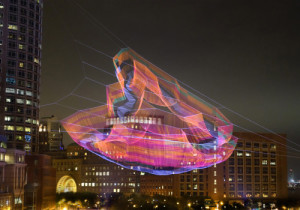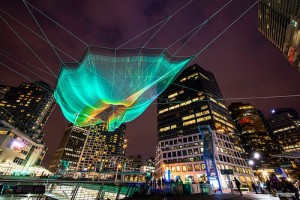By
Zachary Klein
 I’ve read a ton of articles about how my hippie-dippy brothers and sisters from the 60s and 70s accomplished “nothing” during our period as activists. How my generation set the stage for right of center (being polite here) administrations and repressive laws. How my generation failed to block Reagan’s revolution. How my generation ultimately opted into the capitalistic status quo—worried only about upward mobility and shekels. These analyses must be true; I’ve seen them on CNN. Problem is, these analyses are bullshit.
I’ve read a ton of articles about how my hippie-dippy brothers and sisters from the 60s and 70s accomplished “nothing” during our period as activists. How my generation set the stage for right of center (being polite here) administrations and repressive laws. How my generation failed to block Reagan’s revolution. How my generation ultimately opted into the capitalistic status quo—worried only about upward mobility and shekels. These analyses must be true; I’ve seen them on CNN. Problem is, these analyses are bullshit.
Not gonna put lipstick on a pig. We didn’t stop Nixon from gutting Great Society programs. Certainly didn’t stop Reagan from funneling great amounts of wealth from the middle/working/poor classes to the rich and powerful under the guise of “trickle down” economics. Weren’t able to push Clinton toward progressive policies, or stop the upward flow of money under Democratic governance. Couldn’t even slow the egregious wars that occurred after the seventies. Nonetheless, it’s still bullshit…
Because our legacy continues to march on. Women’s equality, LGBT rights recognition, and yes, the anti-war movement. Does anyone actually believe that 30+ percent of the population would have initially objected to the wars in Iraq and Afghanistan had we not fought against the war in Vietnam? Truth is, the 60s and 70s continued to lay the foundation for today’s real political struggles (and no, I don’t mean the presidential race). Our work and commitment, like all foundations, often goes unnoticed, overshadowed by our “sex, drugs, and rock and roll” reputation.
While my intention is not to pat my generation’s back, I also want to point out that a large number of our children have followed in our footsteps. Not necessarily taking to the streets, but you can find them working in social service agencies or inner city schools, or as medical family practitioners (among others) and exposing the underbelly of intolerance and injustice in books, music, journalism, and art.
And not just our children. Folks fighting today are connected to those who came before. As were we. Each generation does not re-invent the wheel when it comes to the struggle for peoples’ dignity and rights. Or against oppression, wars, and dehumanization.
In truth, people who are currently striving for what we, of the 60s and 70s, believe to be right and true, have built upon our work and burrowed into the heart of our country’s societal madness.
Two issues immediately jump to mind—not including climate change, which our Republican presidential candidates refuse to acknowledge.
#BlackLivesMatter is not simply a response to current conditions, but the next step in a long bloody road that stretches from our birth as a nation to Roberts v. City of Boston (1848), to reconstruction, to the founding of the NAACP, to Martin Luther King, Malcolm X, Black Panthers to today. But until recently, the keyword was racism and racism just doesn’t do justice to the brutal, scarring oppression that African-Americans have faced throughout their entire US history. (For an up close and personal, please read Between The World and Me, an extraordinary depiction of present day African-American life by Ta-Nehisi Coates.)
White supremacy, the belief that White people are superior to those of all other races, especially the Black race, and should therefore dominate society, dates back to the 1500s. And yet the United States has made it our own. White supremacy is imbued in our culture, is our culture, and exists inside each and every one of us so called White people.
During my lifetime I’ve seen an expansion of civil rights, an amelioration of discrimination, but until now I hadn’t experienced White people slowly inching toward acknowledgement of White supremacy and how it has affected and contemporaneously affects the lives (and deaths) of people of color–especially African-Americans. I’m beginning to see that today. With shame, it took a drumbeat of police shootings and mass incarcerations to finally slam that reality onto the table. If nothing else, this, in and of itself, is damning evidence of our willful blindness.
Although the Occupy movement is no longer in the streets, its fading light continues to shine on the current, horrific reality beneath the rather bland words of income inequality. Again, if not a direct descendent, a descendent nonetheless of movements whose candles often flicker but will not be extinguished. When a society passes the Robber Baron redline something has to give and it CAN’T be 90% of our country. We now live in a society that rewards a company’s stockholders rather than its workers who are paid so little they often need to supplement their income with food stamps. Please.
We can only hope they have gone too far, or we can be effective enough, to believe in a sleeping giant. If only 60 percent of that 90% actually suffer day-to-day from this “income disparity” (a disproportionate number of sufferers being African-American), that giant has the potential to be awakened by this or the next generation who pick up Occupy’s torch, who itself picked it up from…
And if awakened (admittedly a big ‘if’), woe to those few who have stolen and hoarded our nation’s wealth.
No, it’s not the sixties anymore and it sure ain’t Kansas. I’m no Pollyanna or soothsayer but what I see around me, what I experience coming from this generation, gives me hope. The issues mentioned (and there are many more) represent a frontal assault on the engine that drives this country. And that engine will not go quietly into the night. But “a journey of a thousand mile march begins with a single step,” and we took that step a long time ago.
It’s not denial. I’m just selective about the reality I accept. ~ Bill Watterson





